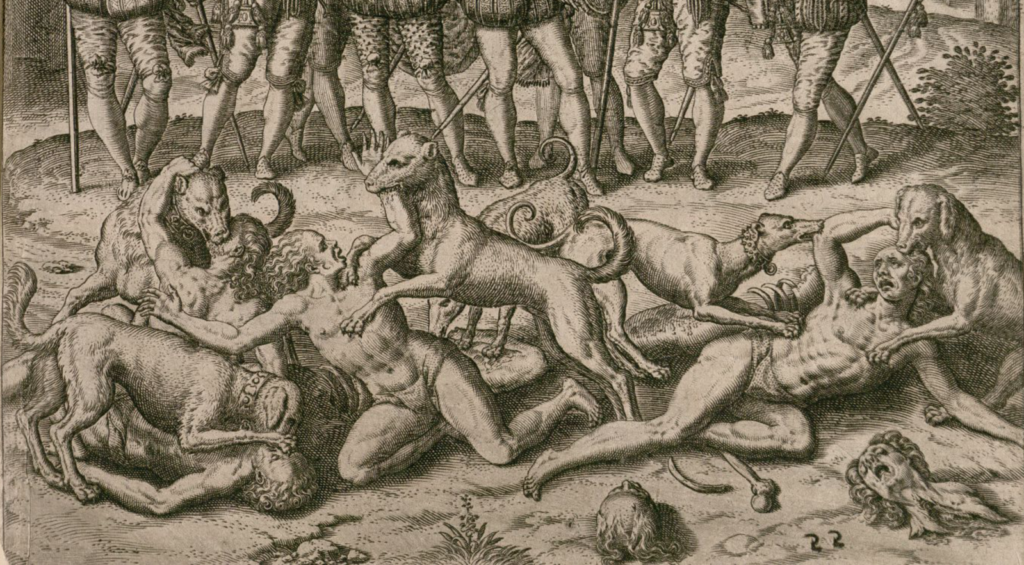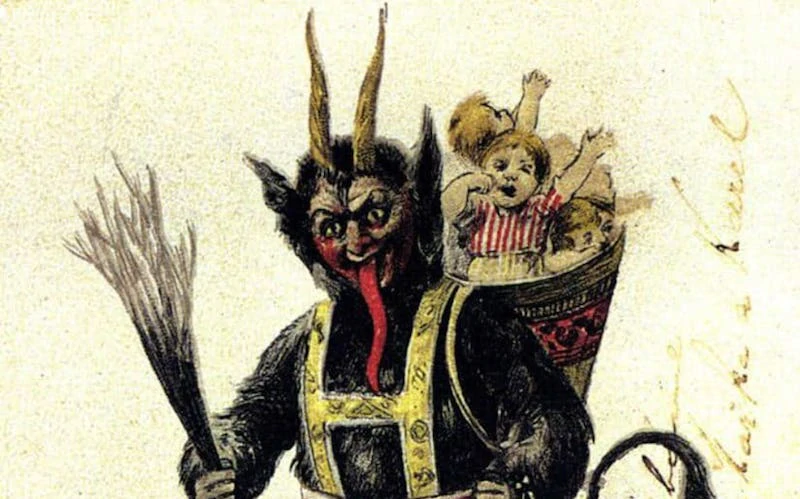Dogs are known to be man’s best friend. But in the case of Spanish war dogs, they became vicious enemies of the people they hunted.
They were bred for size, strength, and even for the taste of human flesh. They were true beasts that the Spanish employed with appalling success against the native peoples of South America and the Caribbean.
The history of Spanish war dogs shows that, like rats used for torture, any animal can be converted into an instrument of destruction.

Spanish War Dogs Were Trained to Be Bloodthirsty
The dogs used by the Spanish during their conquest of the Americas were most likely a mix of greyhounds and mastiffs.
The greyhound can reach speeds of up to 45 miles per hour and has one of the strongest bites of any canine. The mastiff is a powerful creature, bulging with muscle and able to bring down a fully grown human with ease.
Reaching a height of 35 inches and weighing up to 200 pounds (or more), mastiffs were far from the dogs you see strolling around in parks. These were, simply put, killing machines.
Dogs have been used throughout history for tasks ranging from guarding livestock to providing food or comfort to their owners. They have been extolled for their vigilance, both toward their master’s changing moods and toward whatever environment they’re sent to protect.
The Spanish recognized those traits and realized that when brought to bear against their enemies, dogs could become a deadly weapon. Of course, the Spanish were not the first, nor the only nation to use dogs in war to hunt down their enemies.
But the bloody impact that these dogs had on the native populations of the Americas makes this particular episode in history a gruesome example of how animals are only as good as they are trained to be. But when in the hands of the wrong person, they become true nightmares.
Christopher Columbus and His War Dogs
Christopher Columbus is known for introducing Europe to the New World. But he is also known for his cruel treatment and extermination of the native populations that he encountered.
This happened particularly on the island of Hispaniola (present-day Haiti and the Dominican Republic). Dogs were an important part of that effort.
Christopher Columbus first introduced mastiffs to the New World on his second voyage. In May 1494, after struggling to land due to hostile natives, Columbus released a war dog.
In that first encounter, the dog’s ferociousness became clear immediately. As it bounded towards the surprised natives, its fangs glaring, they could do little as it overtook them and ripped into their bare bellies.
The following year, Christopher Columbus and his brother led 20 mastiffs into battle against a group of native people.
What followed was a terrifying rampage as the mastiffs bore down on their enemies and tore them to shreds. They leaped up and ripped throats wide open. They eviscerated the vulnerable flesh of both the living and the dead.
It’s not hard to understand why the native peoples were so afraid of the Spanish mastiff.
Before the arrival of Christopher Columbus, the only dogs on the continent were small and mainly used as a food source. What’s more, the mastiffs were unflinching in battle and went after caciques (chiefs) with no mercy.
No one who wasn’t Spanish was safe from these creatures.
War Dogs vs the Native Americans
In short, the Spanish mastiff represented just one more weapon that helped give the Europeans an advantage over the already vulnerable native populations of South America.
Amazingly, the mastiff was even bred to distinguish between the Spanish and the natives. This meant that anyone who wasn’t a Spaniard was a potential target.
Lacking the heavy armor that the Spanish possessed, native people often had their abdomens ripped open and their entrails pulled out or eaten by the hungry dogs.
The Spanish priest, Bartolomé de las Casas, recorded many of the worst acts of cruelty that the Spanish perpetrated in the Americas. According to him, the war dogs were drawn to the bodies of natives, whose skin and flesh were soft and delicate.
In one particular instance recorded by Las Casas, two soldiers were holding a war dog as their ship was being loaded. When a local chief brandished a stick and started waving it at the Spanish, one of the dog handlers surreptitiously dropped the leash, making it seem like it had escaped his grasp.
The dog sprinted forward, sunk its teeth into the chief’s stomach, and pulled out his intestines even before he hit the ground.
Berecillo – The Most Famous Spanish War Dog
War dogs were so skilled at killing native people that Columbus himself once remarked that they were “worth ten soldiers in battle.” That kind of esteem led some of the best war dogs to be revered as heroes.
Perhaps the most famous of all war dogs was Berecillo. He was a mastiff that belonged to the famous conquistador, Juan Ponce de Leon.
Berecillo was known for his killer instinct. According to accounts, he once killed 33 native peoples within a half hour of battle.
But it was his innate intelligence that made him special. They said he could distinguish between friend and foe and think for himself to come to his own conclusions.
One example of this was when he was ordered to kill an old woman. The woman had been captured. Rather than fight back, which would have no doubt been futile, she became submissive and as non-threatening as possible.
Berecillo saw this, and let her go unharmed. He trusted his moral compass rather than that of his master.
The combination of intelligence and ferocity that Spanish war dogs possessed made them a deadly presence from Peru to Mexico to Hispaniola. Used by Hernán Cortés, Francisco Pizarro, and Christopher Columbus, you could even say that the Spanish war dog was a conquistador’s best friend.
While nowhere near as deadly as the diseases that silently obliterated vast populations of natives, the war dog was a frightening tool that proved just how bloody the conquest of the Americas could be.

